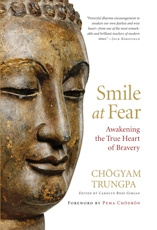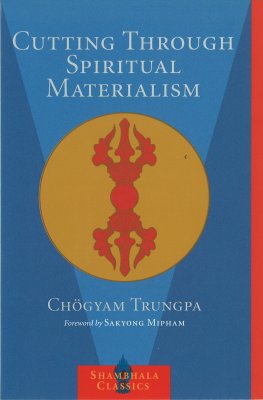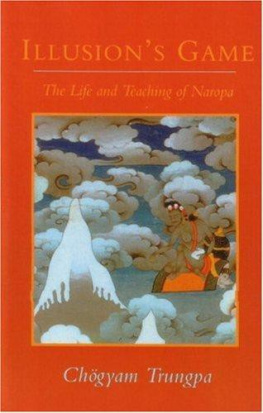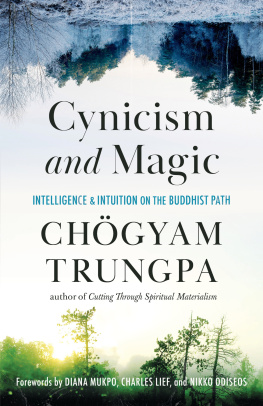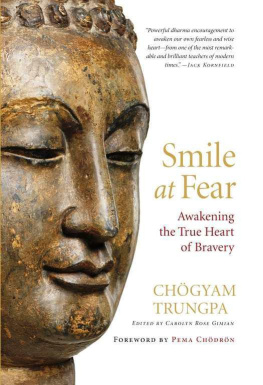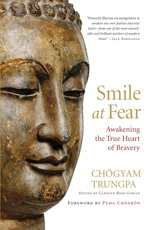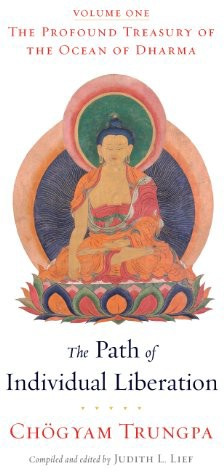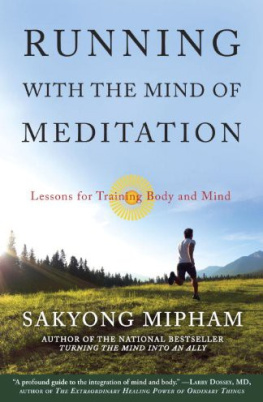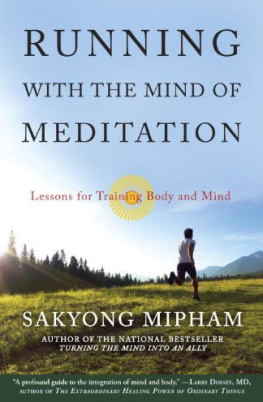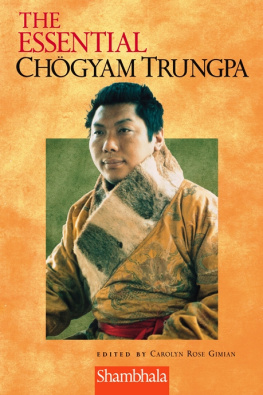The usefulness of this book lies in Trungpas uncanny ability to cut right to the heart of the matter and presents his understanding of Buddhism and the way of life it teaches in a manner that is applicable to his students living situation.
Journal of the American Academy of Religion
ABOUT THE BOOK
In this modern spiritual classic, the Tibetan meditation master Chgyam Trungpa highlights the commonest pitfall to which every aspirant on the spiritual path falls prey: what he calls spiritual materialism. The universal tendency, he shows, is to see spirituality as a process of self-improvementthe impulse to develop and refine the ego when the ego is, by nature, essentially empty. The problem is that ego can convert anything to its own use, he said, even spirituality. His incisive, compassionate teachings serve to wake us up from this trick we all play on ourselves, and to offer us a far brighter reality: the true and joyous liberation that inevitably involves letting go of the self rather than working to improve it. It is a message that has resonated with students for nearly thirty years, and remains fresh as ever today.
This new edition includes a foreword by Chgyam Trungpas son and lineage holder, Sakyong Mipham.
CHGYAM TRUNGPAmeditation master, teacher, and artistwas the founder of Naropa University and is the author of numerous books on Buddhism and the path of meditation, including Shambhala: The Sacred Path of the Warrior, Smile at Fear, The Myth of Freedom, and Great Eastern Sun.
SAKYONG MIPHAM is the leader of the Shambhala Buddhist lineage and is spiritual director of Shambhala International, a network of meditation and retreat centers. He writes a regular column in the Shambhala Sun, he is the author of the best-selling Turning the Mind into an Ally, and he regularly offers retreats and workshops throughout the world. Sakyong Mipham is the eldest son of Chgyam Trungpa, who was instrumental in bringing Tibetan Buddhism to the West. He is also an avid marathon runner and golfer, and he has been named one of the thirty global visionaries of our time by Planet magazine.
Sign up to receive inspirational quotes by Chgyam Trungpa and special offers from Shambhala Publications.

Or visit us online to sign up at shambhala.com/eoceanofdharma.
Cutting Through
Spiritual Materialism

C HGYAM T RUNGPA
Foreword by Sakyong Mipham
Edited by John Baker and Marvin Casper
Illustrated by Glen Eddy

S HAMBHALA
Boston & London
2010
S HAMBHALA P UBLICATIONS , I NC .
Horticultural Hall
300 Massachusetts Avenue
Boston, Massachusetts 02115
www.shambhala.com
1973 by Chgyam Trungpa
Illustrations 1973 Shambhala Publications, Inc.
Foreword 2002 by Sakyong Mipham
All rights reserved. No part of this book may be reproduced in any form or by any means, electronic or mechanical, including photocopying, recording, or by any information storage and retrieval system, without permission in writing from the publisher.
The Library of Congress catalogues the previous edition of this book as follows:
Trungpa, Chgyam, 1939
Cutting through spiritual materialism.
Two lecture series given in Boulder, Colo.
197071.
Includes index.
1. Spiritual life (Buddhism) I. Baker, John.
II. Casper, Marvin. III. Title.
BQ 4302.178 1987 294.3444 87-4619
eISBN 978-0-8348-2122-4
ISBN 978-0-87773-050-7
ISBN 978-1-57062-957-0
ISBN 978-1-59030-639-0
To
Chokyi-lodr the Marpa
Father of the Kagy lineage
CONTENTS
ILLUSTRATIONS
. Sengge Dradok. The aspect of Padmasambhava who teaches with the lions roar that subdues the heretics of hope and fear.
. Marpa. Founder of the Kagy lineage. Drawn by Sherab Palden Beru.
. Tilopa the guru. The teacher of Naropa.
. Pig, snake, and rooster. They represent stupidity, aggression, and passion.
. Lohan. An arhat in meditation posture, a disciple of the Buddha. William Rockhill Nelson Gallery of Art, Kansas City, Mo.
. The coil of joy.
. The portrait of samsara.
. Shakyamuni Buddha in earth-witness mudra, with disciples Shariputra and Mahamaudgalyayana.
. The three principal bodhisattvas: Avalokiteshvara, Manjushri, and Vajrapani. They represent the aspects of the enlightened state: compassion, knowledge, and power.
. Prajnaparamita. The mother of all the buddhas, the ground of all dharmas.
. Vajradhara and consort. The personification of Shakyamuni Buddha teaching tantra. Symbol of the absolute in its polarity aspect.
FOREWORD
T HE INSPIRATION to find the truth, to see what is real, and to lead a genuine lifethe culmination of which can be enlightenmentis what underlies every spiritual journey. However, embarking on this journey is rarely as straightforward as we may wish. The journey toward enlightenment ultimately may be both profound and simple, yet the process of understanding that simplicity tends to be multidimensional, if not downright complicated. For in order to understand a spiritual path, we must acknowledge and understand our own mind, now, as it pertains to the journey. What misunderstandings and concepts we may have about a spiritual practice, we must overcome so that were not merely practicing according to our own conceptualized idea. Ego, and the myriad games it plays to unravel our inspiration for enlightenment, must always be monitored.
To understand the essential qualities of the spiritual path, especially what obstacles or conundrums might lie ahead, we need a clear sense of direction. We need teachings, instructions, and guidance from someone who has traveled the path and therefore can give valid and confident advice about how others could travel this same path. This is what is offered by my father, Chgyam Trungpa, in Cutting Through Spiritual Materialism.
These lectures and teachings were given in the early 1970s, at a crossroads of heightened awareness and spiritual awakening in the United States. East was beginning to meet West. Having turned away from their parents values, a whole generation was investigating newly available spiritual pathsmany of them quite traditional. People wanted a path that would help them rise above lifes mundane trappings to see a more expansive view, a view that would dissolve their feeling of alienation and penetrate lifes very meaning. At the same time, many of these seekers were still trying to figure out what a genuine path to liberation was. There was a quality of freshness, exuberance, excitement, and youth, as well as naivet.
People were naive about the many pitfalls possible on any path. Spiritual awakening is not a happy-golucky endeavor. The path of truth is profoundand so are the obstacles and possibilities for self-deception. No matter what the practice or teaching, ego loves to wait in ambush to appropriate spirituality for its own survival and gain. Chgyam Trungpawho had just arrived in the States from Scotlandtried to clarify these issues. He wanted to raise peoples awareness to a level where they could distinguish between what is genuine spiritual progress and what is ego hijacking spirituality for its own purposes. He wanted to help them learn to recognize the grip of the three lords of materialismstrategies that ego can use any time, any place, in order to seduce us from a bigger view back into its self-limiting perspective.
Next page
